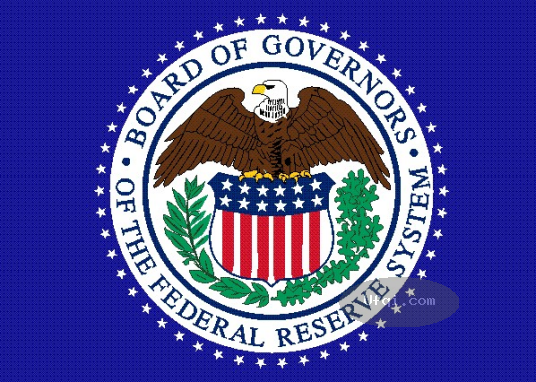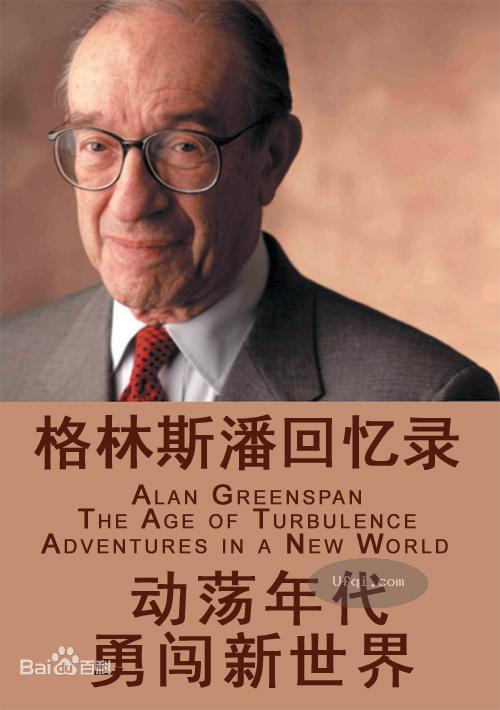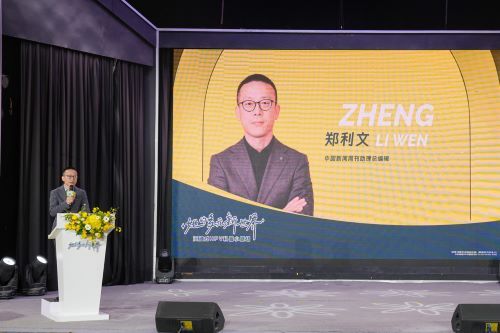


2023-05-03 , 8662 , 104 , 170
美国联邦储备委员会主席艾伦格林斯潘回忆录——动荡年代:勇闯新世界-the age of turbulence-26
(美国)联邦储备系统(英语:Federal Reserve System,缩写FRS,简称美联储或Fed)是美国的中央银行体系,依据美国国会通过的1913年《联邦储备法案》而创设,以避免再度发生类似1907年的银行危机。
整个系统包括联邦储备委员会、联邦公开市场委员会、联邦储备银行、三千家会员银行及3个咨询委员会(Advisory Councils)。
总部位于(美国)华盛顿特区埃克斯大楼。
----
PRIVATE CITIZEN
Most commissions, of course, don't do anything. But Jim Baker, the architect of this one; believed passionately that government could be made to work.
The commission he built was a virtuoso demonstration of how to get things done in Washington. It was a bipartisan group, with five members chosen by the White House, five by the Senate majority leader, and five by the Speaker of the House. Virtually every commissioner was an all-star in his or her field.
There were congressional heavy hitters like Bob Dole, the chairman of the Senate Finance Committee; Pat Moynihan, the brilliant maverick senator from New York; and Claude Pepper, the outspoken eighty-one-year-old congressman from Florida who was a senior citizens' icon. Lane Kirkland, the head of the AFL-CIO, was a member and became a close friend; so was Alexander Trowbridge, the head of the National Association of Manufacturers. House SpeakerTip O'Neill appointed the top Democrat—Bob Ball, who had run the Social Security Administration for LB J. And the president appointed me as chairman.
I won't go into the intricacies of demographics and finance we mastered,
or the policy debates and hearings that ate up more than a year. I ran the commission in the spirit that Jim Baker had envisioned, aiming for an effective
bipartisan compromise. We took four key steps to make the whole thing work, which I'll mention because I've used variations of them ever since.
The first was to limit the problem. In this case, it meant not taking up the issue of the future funding of Medicare—while technically part of Social Security, Medicare was a far more complex problem, and trying to solve both could mean we would do neither.
The second was to get everyone to agree on the problem's numerical dimensions. As Pat Moynihan later put it, "You're entitled to your own opinion, but you're not entitled to your own facts." When it was clear that a long-term shortfall was real, commission members lost their ability to demagogue. They had to support cuts in benefits and/or support a rise in revenues. Reverting to the cop-out of financing Social Security from the federal government's "general revenues" was adamantly ruled out early by Pepper, who worried it would cause Social Security to become a welfare program.
The third smart tactic came from Baker. If we wanted a compromise to succeed, he argued, we had to bring everybody along. So we made a point .1 of 738 - 8:20 PM St Louis Fed Econo.
95
of keeping both Reagan and O'Neill in the loop as we worked. It became Bob Ball's job to inform O'Neill, and my job and Baker's to inform the president.



Our fourth move was to agree among the commissioners that once a compromise was reached, we would stand firm against any amendments being imposed by either party. I later told reporters, "If you take pieces out of the package, you will lose the consensus, and the whole agreement starts to unravel." We published our report in January 1983; when it was finally time to present the reform proposals to Congress, Ball and I resolved to testify side by side. Whenever a Republican asked a question, I would answer it.
And whenever a Democrat asked a question, he would answer it. Which is just what we tried to do, though the senators didn't entirely cooperate.
Diverse as our commission was, we found ways to agree. What brought together men like Claude Pepper and the head of the manufacturers was the care we took to spread the burden. The Social Security Amendments,
which Reagan ultimately signed into law in 1983, involved pain for everyone.
Employers had to absorb further increases in the payroll tax; employees faced higher taxes too and in some cases saw the date when they could anticipate receiving benefits pushed further into the future; retirees had to accept postponement of cost-of-living increases, and wealthier retirees began having their benefits taxed. But by doing all this, we succeeded in funding Social Security over the seventy-five-year planning period that is conventional for social insurance programs. Moynihan, with his usual eloquence,
declared: "I have the strongest feeling that we all have won. What we have won is a resolution of the terrible fear in this country, that the Social Security system was, like a chain letter, something of a fraud."
As all this was still unfolding in 1983,1 was in my office one day in New York poring over demographic projections when the telephone rang.
It was Andrea Mitchell, a reporter for NBC. "I've got some questions about the president's budget proposals/' she said. She explained that she'd been trying to figure out whether the Reagan administration's latest fiscal-policy assumptions were credible, and that David Gergen, the assistant to the White House communications chief, had suggested my name. She told me
96
Gergen had said, "If you really want to know about the economy, why don't you call Alan Greenspan? He knows more than anybody."
"I'll bet you say that to all the economists/' I replied, "but sure, let's talk." I'd noticed Andrea on NBC newscasts. She was a White House correspondent.
I thought she was very articulate and that her voice had the nicest authoritative resonance. Also, I'd noted, she was a very good-looking woman.
We talked that day and a few more times, and soon I became a regular source. Over the next two years, Andrea would phone whenever she had a big economics story in the works. I liked the way she handled the material on TV; even when the issues were too complex to present in their full technical detail, she would find the crux of the story. And she was accurate with the facts.
In 1984 Andrea asked if I'd come with her to the White House Correspondents'
Dinner, where reporters invite their sources. I had to tell her that I'd already agreed to go with Barbara Walters. But I added, "Do you ever get to New York? Maybe we could have dinner."
It took another eight months before we could connect—it was an election year, and Andrea was extremely busy through November, when Reagan defeated Mondale in a landslide. Finally when the holidays arrived, we scheduled a date, and I made a reservation at Le Perigord, my favorite restaurant in New York, for December 28. It was a snowy night and Andrea rushed in late, looking very beautiful if a bit disheveled after a day of reporting the news and trying to hail cabs in the snow.



UfqiLong
That night I discovered she was a former musician like me; she'd played violin in the Westchester Symphony. We loved the same music—her record collection was similar to mine. She liked baseball. But mainly we shared an intense interest in current affairs—strategic, political, military, diplomatic.
There was no shortage of things to talk about.
It might not be everybody's idea of first-date conversation, but at the restaurant we ended up discussing monopolies. I told her I'd written an essay on the subject and invited her back to my apartment to read it. She teases me about that now, saying, "What, you didn't have any etchings?"
But we did go to my apartment and I showed her this essay I'd written on antitrust for Ayn Rand. She read it and we discussed it. To this day, Andrea
97
claims I was giving her a test. But it wasn't that; I was doing everything I could think of to keep her around.
For much of Reagan's second term, Andrea was my main reason to go to Washington. I stayed in touch with people in the government, but my focus was almost entirely in the business and economics world of New York. As business economics matured as a profession, I'd gotten deeply involved in its organizations. I'd served as president of the National Association of Business Economists and as chairman of the Conference of Business Economists, and was slated to become chairman of the Economic Club of New York, the financial and business world's equivalent of the Council on Foreign Relations.
Townsend-Greenspan itself had changed. Large economics firms with names like DRI and Wharton Econometrics had grown up to supply much of the basic data needed by business planners. Computer modeling had become much more widespread, and many corporations had economists of their own. I'd experimented with diversifying into investment and pension-fund consulting, but while those ventures made money, they weren't as lucrative as corporate consulting. Also, more projects meant more employees,
which meant more of my time had to be spent managing the business.
Ultimately I concluded that the best course was to focus exclusively on what I did best: solve interesting analytical puzzles for sophisticated clients who needed answers and could pay high-end fees. So in the second half of the Reagan administration I planned to scale back Townsend-Greenspan.
But before I could implement those plans, in March 1987, I received a phone call from Jim Baker. Baker was by this time treasury secretary—after an intense four years as White House chief of staff, he'd made an unusual job swap, trading posts in 1985 with Don Regan. Jim and I had been friends since the Ford days, and I'd helped him prepare for his Senate confirmation hearing the spring he took over at Treasury. He had his assistant call to ask if I could come to Washington for a meeting at his house. This struck me as odd—why not meet at his office? But I agreed.
98
(未完待续, To be contd)



🔗 连载目录
🤖 智能推荐









